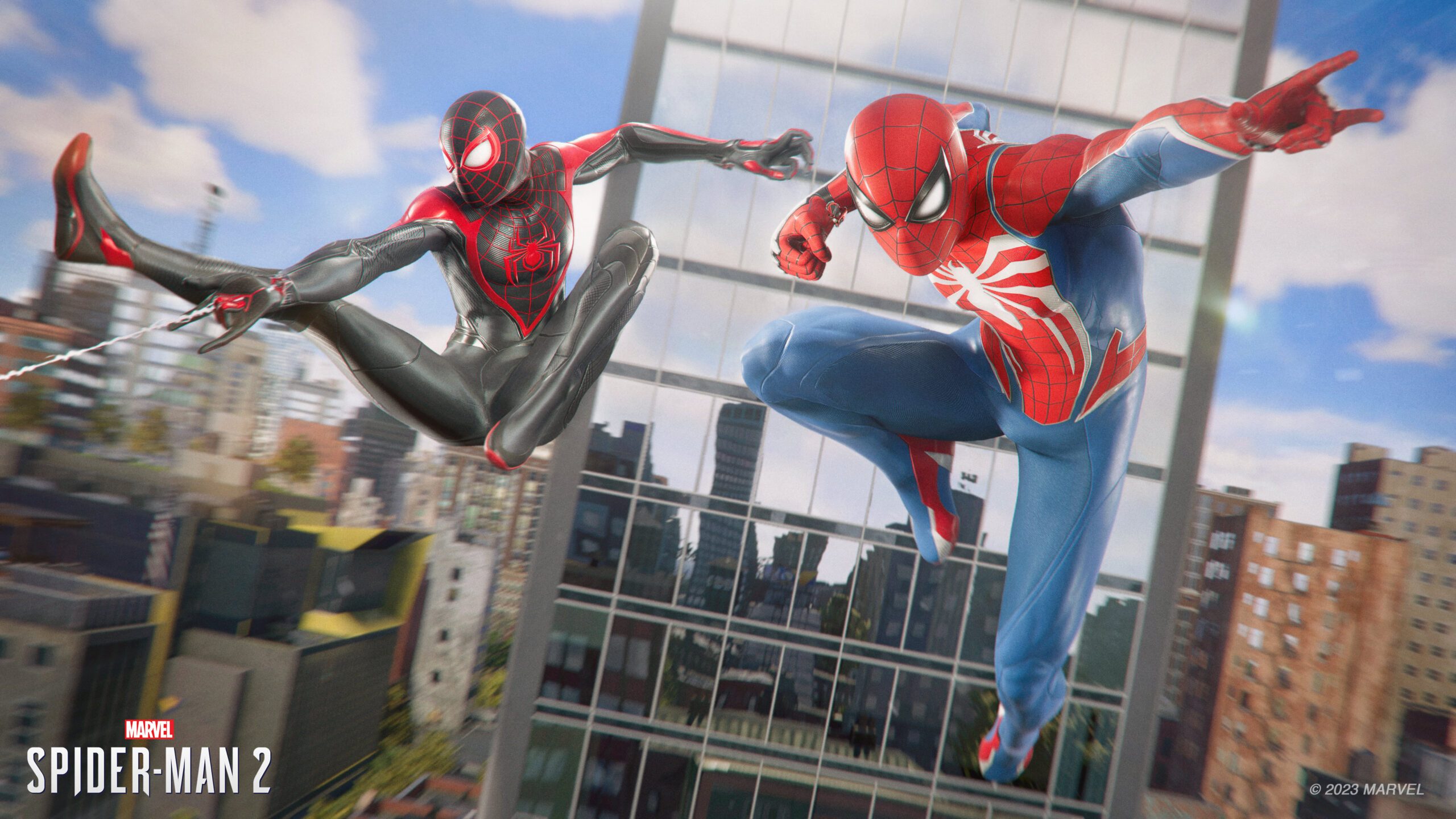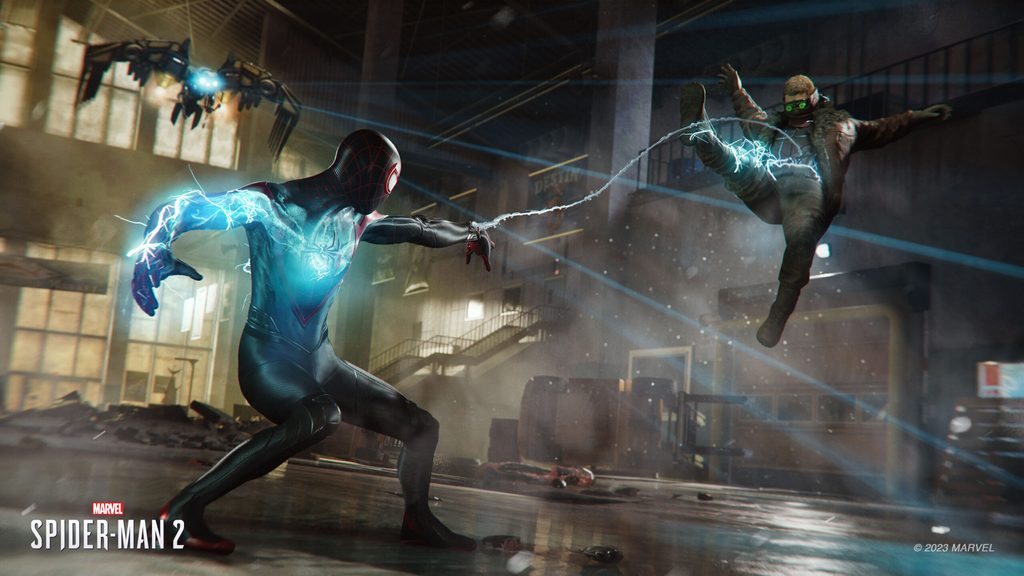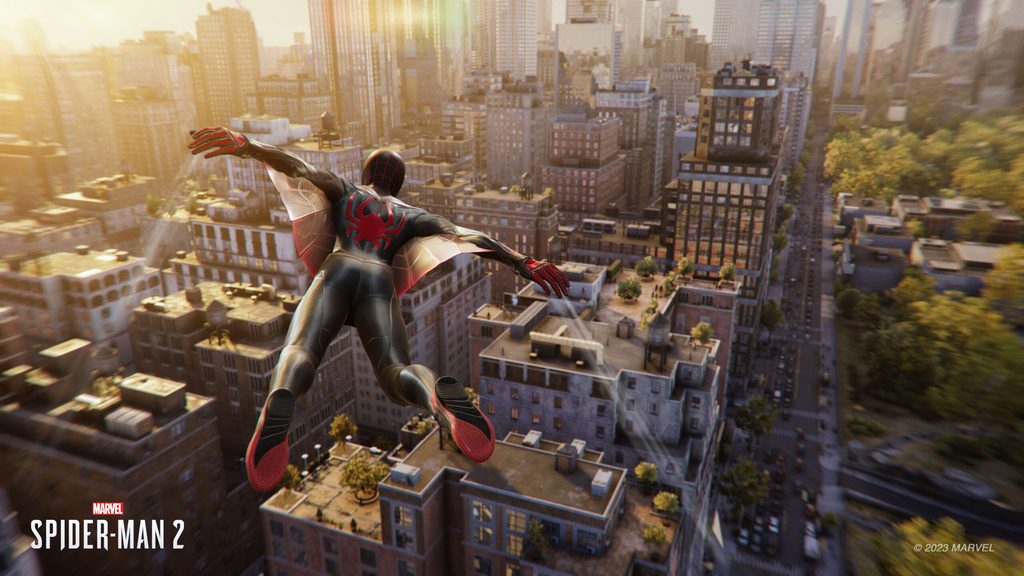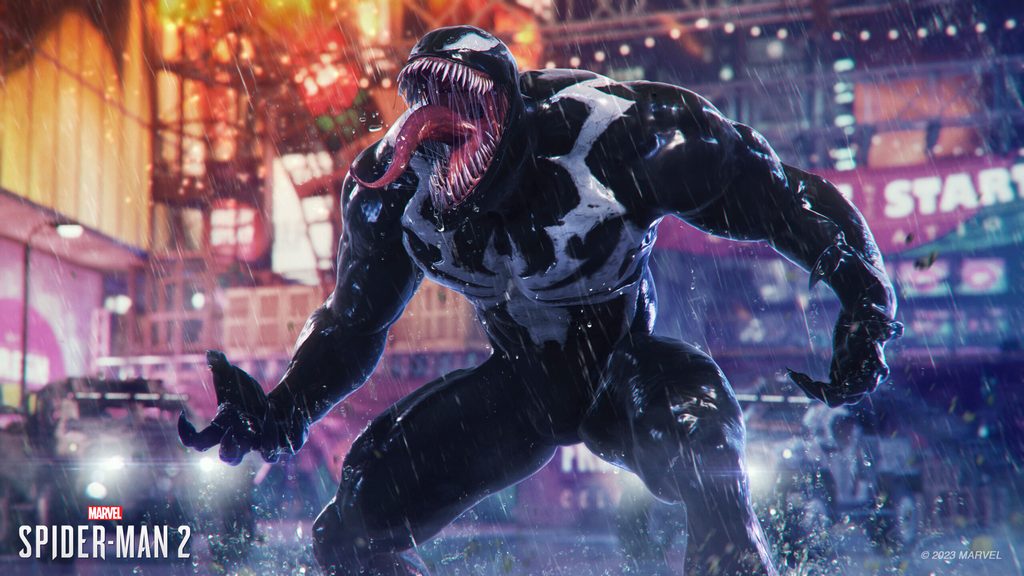SUMMARY
This is AI generated summarization, which may have errors. For context, always refer to the full article.

Disclosure: Sony provided a copy of the game for this review.
Marvel’s Spider-Man 2 continues Sony’s impressive streak of winning first-party releases, more than living up to its lofty expectations of being the headlining PS5 exclusive of 2023.
This much anticipated sequel to 2018’s Marvel’s Spider-Man and 2020’s Marvel’s Spider-Man: Miles Morales raises the bar not only for superhero games but also for next-gen, blockbuster exclusives.
It’s essentially the Arkham City to Spider-Man’s Arkham Asylum, expanding the scope, stakes, scale of the story, while building upon an already strong gameplay foundation with some worthwhile additions.
You’re dropped nine months after the events of Miles Morales, once again suiting up as the friendly neighborhood wallcrawler himself, Spider-Man, though this time, he’s not alone. Spider-Man 2 takes its title a little too literally, with not one but two Spider-Man being playable – Peter Parker and Miles Morales.
The former is adjusting to life after Aunt May’s death, moving into her home as he hopes to finally land on his feet with his new job as a school teacher. Meanwhile, the latter is stressing over college admissions, struggling to write his application essay as he navigates through changes in his own life.
The emergence of new threats once again thrusts the two heroes to don their respective masks to protect New York City and the people they love.
I won’t go into detail about the story here to avoid spoilers. What I can say, however, is that, like the previous games, Spider-Man 2 does a fantastic job of balancing the screen time between Peter and Miles’ two separate lives: as themselves and as Spider-Man.
That balance is so important because any fan of the webhead knows that some of the best Spider-Man stories, be it in comics, movies, shows, and games, cleverly tie together the conflicts of the hero with the person under the mask. That, of course, is true as well for Marvel’s Spider-Man 2.
Is the story better than that of Marvel’s Spider-Man? That’s up for debate. I think how you’ll like this game’s story would largely depend on what you want out of a Spider-Man story. Personally, I like the first game’s story a teeny-tiny bit more, but I can confidently say this sequel is more action-packed and has more memorable set piece moments – some of which are nothing short of jaw-dropping.
The story is made more engaging by the impressive visuals, specifically the character models that are now more expressive than they were previously. That coupled with the lifelike facial animations help convey so much emotion to the cutscenes and bring out the actor’s brilliant performances.
The ray-traced lighting and reflections here also do a lot to elevate the visuals and make environments look more realistic. But overall, I don’t think there’s a huge leap in graphics when compared to the previous games. Then again, those games already looked incredible, so it’s probably hard to top them graphically on the same console generation.
Two is better than one
Marvel’s Spider-Man 2, as I mentioned earlier, features two playable Spider-Man, and you can switch between them during the free roam parts of the game, the same way it works in Grand Theft Auto V.
Some story missions and activities are exclusive to one Spider-Man, which limits the feature a bit, but I do appreciate that you have the option to fight crime in the open world using the Spider-Man of your choice.
Switching is instantaneous and feels seamless thanks to the PS5’s SSD, which I love. Another thing I love is how after switching, the other Spider-Man, can go fight crimes in the city on his own, and you can drop in to help him out.
This adds so much to immersion, giving you the impression that the other Spider-Man isn’t just idle in some part of the city while you’re not actively controlling him.
Peter and Miles each have their own unique offensive abilities that you learn and upgrade during the course of the game. The two feel distinct enough from one another even though how their abilities work and are mapped on the controller is the same.
Peter’s default abilities utilize the four mechanized claws that pop out of the back of his reworked suit. Later on, he bonds with the Symbiote and acquires new and more destructive abilities, including one which lets him shoot out tendrils from his suit catapulting enemies backwards.
Miles’ abilities, meanwhile, come from his bioelectric Venom powers, which now come in two color schemes, yellow and blue, with the latter being new to this game. Like Peter, the younger Spider-Man’s newfound powers play into his own story arc.

Each Spider-Man has his own skill trees for their unique abilities. Peter and Miles can have four abilities mapped to the controller at any one time, and they’re activated by pressing L1 plus a corresponding face button.
Web gadgets, on the other hand, are shared by the two Spider-Man, and are mapped to R1.
They also have a shared skill tree featuring abilities that both heroes can use. One of which is Slingshot Launch, which sees Spider-Man web onto parallel poles or buildings, pull himself back, and launch himself into the air at blazing speeds. It’s a neat trick that combines well with the other new traversal abilities, which I’ll get to in a bit.
You can also upgrade Peter and Miles’ stats with passive upgrades using tokens you collect from engaging in the open world activities.
If you played the previous games, you’ll likely immediately notice how combat feels slightly faster and smoother here. At its core, combat remains a rhythmic dance of punches, kicks, acrobatics, and web powers but attacks now flow better and are more responsive. The improved use of the DualSense controller’s haptics also better sell the impact of each hit.
You’re also no longer limited to dodging to defend against enemy attacks. You now have a parry ability, which works as you might expect – hit a button just as your enemy is about to connect with an attack and you deflect it, opening them up for a combo.
The new mechanic can take some getting used to since the previous games have done so well to condition you to dodge attacks when you see the on-screen warning. But at least this game gives you ample opportunities to rework your muscle memory and incorporate the ability to your defensive arsenal.
I appreciate that it does that because the parry ability is essential in a number of the game’s boss encounters.
I also want to mention how the new Symbiote suit not only looks cool but actually makes you feel powerful. The suit’s special ability, Symbiote Surge, amplifies your damage output and makes you practically invincible, enabling you to unleash hell on your enemies.
Hello, New York
The New York of Marvel’s Spider-Man 2 is twice the size of the first game’s, with the addition of new boroughs: Queens and Brooklyn. The two, characterized by brownstone buildings and rowhouses, help vary the urban landscape of the game’s open world, providing a welcome contrast to the soaring skyscrapers of Manhattan.
To help you get around the expanded New York, Peter and Miles now have access to a new piece of Spider-Man tech: Web Wings, shown below.

The new traversal ability lets you glide through the air and get around the open world much faster, and it seamlessly chains with your web-swinging abilities, letting you use the momentum you build to propel you further than ever before without touching ground.
It’s so well implemented and fun to use that not once did I ever think to use the fast travel option.
I also like the new approach to collectibles here. In the first game, you activate police surveillance towers to unlock parts of the map and have it show the location of nearby collectibles a la Viewpoints in Assassin’s Creed. This time around, you actually have to explore the open world to unlock the map and the locations of collectibles.
These collectibles, along with side missions and street crimes outside of the main story, remain optional. You’d probably want to tackle at least a few of them though during your playthrough as they net you tokens you can use to upgrade your gadgets and buy new suits.
On the technical side, Marvel’s Spider-Man 2 features two graphics modes: Fidelity and Performance. The former has all the visual bells and whistles but caps the frame rate at 30fps, while the latter targets a smoother gaming experience at 60fps. Both modes feature real-time ray-tracing.
I went with Fidelity for my review playthrough, and apart from one crash and a small number of visual hiccups, I didn’t run into any major issues. The game loaded extremely fast and ran smoothly, maintaining a solid 30fps from start to finish. Without any doubt, it’s one of the most polished games I’ve played in quite a while.
When it comes to length, the game is about as long as Marvel’s Spider-Man. It took me about 15 hours to complete the game in my review playthrough, where I mostly focused on the main story. You could easily add another 8 to 10 hours if you try to tackle all the collectibles and side activities, bringing the total length within the 20-plus-hour range.
That number can be short, especially when compared to other games that feature an open world, but I think the more focused scope works in favor of the game, preventing any one activity from overstaying its welcome.
As good as the game already is, there are two minor things that I can think of off the top of my head that can make it even better – two things that are already in the previous two games but are missing here.
One is the character guide that you can access from the in-game menu showing the bios, backstories, and powers of all the characters you encounter during the story. This game could have benefitted from having such a feature to help players get better acquainted with new and returning characters, with it being a sequel that exists in its own world outside of the Spider-Man movies, shows, and comics.

Another is a collectibles section for the podcast clips that play while you’re out in the open world. These usually play as you’re out exploring the open world but can be interrupted when you tackle side activities like street crimes, for example.
When that happens, they don’t play again, and I couldn’t find a way to access them outside of the game. Previously, after a clip is played, it gets added to a section in the menu where it tracks collectibles, allowing you to access and replay them whenever you want.
These are minor annoyances but, as someone who wants to get the most out of the game’s characters and world, it’s a shame these features are missing.
Marvel’s Spider-Man 2, as a complete package, arguably stands head and shoulders above Marvel’s Spider–Man and Miles Morales. It’s bigger and better in almost every regard, delivering a finely crafted experience that features a finely paced story, stunning set piece moments, high-production cinematics, and endlessly fun combat and web-swinging mechanics, among so many others.
There were so many moments that had this Spidey fan smiling from cheek to cheek – it’s that good. I’d even go as far to say that it’s my new favorite superhero game ever – yes, over Batman: Arkham City.
With this game, developer Insomniac Games also proves that it can consistently deliver quality exclusives even as the most prolific studio in Sony’s stable, which makes me even more excited for their next game, Marvel’s Wolverine. – Rappler.com
Add a comment
How does this make you feel?





There are no comments yet. Add your comment to start the conversation.